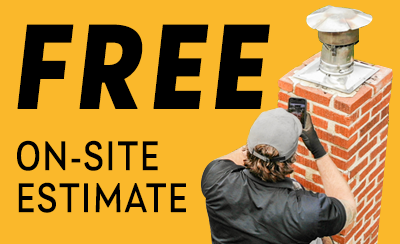Easy Steps to Make Sure Your Fireplace Is Safe
Cold weather has swept into Upstate New York, and it’s here to stay until spring. So while you pull out your oversized sweaters, thick socks, and winter coats, don’t forget to schedule a professional chimney inspection! October is National Fire Prevent Month in the United States. If you have a fireplace, one of the most important steps you can take to prevent a fire is to schedule an annual chimney cleaning and inspection. If you already had your chimney cleaned and inspected this year, there are five easy steps you can take to ensure it’s ready for another burning season.
Charge Your Fire Prevention Equipment
Autumn is a good time of year to replace the batteries in your fire detectors and carbon monoxide detectors. You should have at least one on each floor of your house. It is especially important to have a carbon monoxide detector near the fireplace and fire detectors in your kitchen and bedrooms. In addition, the Chimney Safety Institute of America (CSIA) recommends having a fully charged, 5-pound fire extinguisher with a flexible hose near your fireplace.
 Test the Damper
Test the Damper
Near the top of the firebox or fireplace interior, you should see a lever that you can slide back and forth or up and down. This is the damper. It controls airflow in and out of your fireplace. Move it to the open and closed positions to make sure it is working. If you have trouble moving it, call on a professional chimney technician! The damper may be damaged or need to be cleaned.
You shouldn’t use your fireplace if the damper is broken, especially if it is stuck closed. If the damper is shut, smoke and carbon monoxide produced by the fire won’t be able to escape up the chimney. This poses a severe risk to your safety since carbon monoxide is the leading cause of poisoning deaths in the US.
Check the Grate or Burners
If you have a wood-burning fireplace, check the size of the grate. It should be two-thirds the size of the fireplace opening. Having a grate that is too large is a fire safety risk. You are more likely to overheat your fireplace if the grate is too large. If your grate isn’t the correct size, it’s wise to pick up a smaller one.
If you have a gas fireplace, you should check the burners before igniting it. First, shut off the gas valve and make sure the igniter sparks. Then turn the gas back on and ignite the fireplace. Look to see that the flames are coming out of each of the holes in the burner. If any holes are blocked, call on an experienced fireplace expert for a gas fireplace inspection and cleaning. Debris can build up inside the burner, creating a potentially dangerous obstruction.
Look for Water or Smoke Stains
Do you see any smoke stains or water stains around the chimney?
Smoke stains are a sign that your chimney isn’t venting correctly. The chimney liner is most likely damaged, allowing smoke to escape through the wall instead of out the chimney top. Along with leaving behind an ugly stain and unpleasant spell, it can be a serious safety hazard. Using a fireplace with a broken chimney liner increases your risk of carbon monoxide poisoning and a house fire.
Water stains signify that you have a chimney leak that needs to be taken care of. It may be caused by a missing chimney cap, damaged flashing, a broken chimney crown, or untreated masonry. A chimney leak can cause expensive water damage to support beams, drywall, and flooring around the chimney. It can also weaken the structure of your chimney and create a breeding ground for toxic mold.
Either one of these issues is a sign that a problem inside your chimney needs to be repaired. You can protect your home and loved ones by calling on a chimney service now to solve the problem.
 Scan Your Chimney
Scan Your Chimney
Step outside and take a look at your chimney from the ground to the top. Notice if there are overhanging branches that need to be cut back. Also, look out for:
- A missing or damaged chimney cap or chimney chase cover.
- Cracked or broken bricks, stones, or mortar.
- Missing or damaged chimney flashing or roofing along the base of the chimney.
- White residue (efflorescence) staining the outside of the bricks.
- A crooked or leaning chimney.
If you notice any of these issues, call on a chimney expert! These may seem like minor issues but, if any one of them isn’t repaired, you could face expensive repairs in the future.
Before you light up your fireplace this fall, we hope you take the time to do these five simple fire safety steps. You could prevent a house fire and carbon monoxide poisoning by charging your fire extinguisher, testing the fireplace damper, checking the grate or burners, looking for stains around the fireplace, and scanning your chimney for problems. If you need a chimney inspection or repairs, call on Felgemacher Masonry & Chimney! Our certified, trained chimney repair professionals serve residents in Buffalo, NY, Rochester, NY, and the surrounding area.





